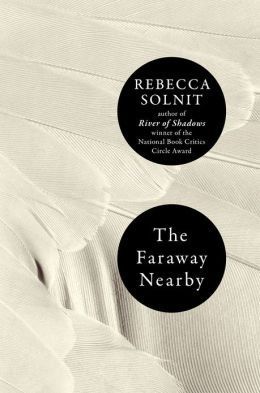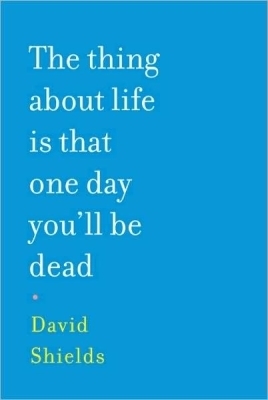A reader’s log
[In both categories.]
In 2012 I kept a reading log for the first time, and learned that I read 68 books. I thought it would be more—like 100—but the body count still impressed me. What’s weird is that I’ve just tallied my total for 2013 and it’s again 68 books. What are the odds? And is my seemingly permanent number respectable?A 2010 post by Cynthia Newberry Martin on her fine Catching Days blog puts things in perspective. Cindy and her responders are both writers and serious readers, and nobody mentioned cracking 100. My number is apparently typical, the range roughly 40 to 78. I’m not a fast reader, nor do I desire to be. In fact, a danger for a counter is reading shorter books just to boost one’s tally. Surely it’s better, for a reading writer, to have read 40 great books than to have consumed 100 solely for diversion or bragging.
As always, my 2013 list functions as a kind of diary: knowing when I read a book tends to remind me of the reading experience, as do my brief remarks. (I made an Excel spreadsheet with columns for dates, page counts, comments, etc.) Sometimes those brief judgments are coherent enough for a reader’s review on Amazon or Goodreads. My best short reviews, however, are distillations of the longer analyses I post here. I review a lot of books on this blog, which is odd because I find reviews so hard to write. Something about reviewing must appeal to me—I think it’s figuring out a book on a deeper level, really seeing how it works. Or learning why, for me at least, it doesn’t quite cohere.
A 2013 example is Rebecca Solnit’s meditation on stories, The Faraway Nearby, which I wrote a lot about here. It’s a thrilling book, and has the air of a classic. And it’s personally important to me on a couple levels. As a reader I struggled at times, however, and had to read the book again to put my finger on what caused this (yes, I counted the book twice). I distilled my long review into this notice on Goodreads:
The Faraway Nearby opens with 100 pounds of apricots, collected from her ailing mother’s tree, ripening and rotting on Solnit’s floor, a bequest and a burden as if from a fairy tale. The fruit was a story, she explains, and also “an invitation to examine the business of making and changing stories.” So Solnit tells her own story, shows how she escaped it by entering the wider world of others’ stories, and how she changed her story as she better understood her unhappy mother and their bad relationship.
A key to this unusual book is the story in The Thousand and One Nights of the sultan who, cuckholded by his queen, decides to sleep with a new virgin every night and kill her in the morning. Scheherazade volunteers to end the slaughter by telling the jealous man endless stories, distracting him with suspense so that he spares her life; in time she bears three sons, and he becomes less murderous. “Those ex-virgins who died were inside the sultan’s story,” Solnit writes. “Scheherazade, like a working-class hero, seized control of the means of production and talked her way out.”
By the same token, there are almost too many stories in The Faraway Nearby to list. Solnit has said she’s a collector of stray bits, her method bricolage. Using that clue illuminates her apparent working method: there’s been a patient melding, with verbal transitions for topic shifts. Though her method is collage-like, with disparate subjects juxtaposed, the white space one would expect is rare. This makes for more demanding reading—less warning of new topics and less time for a reader’s preparation. You’re immersed a new story before you know it. Some readers will get lost and bored and close the book.
Toward the end, she returns to her mother and to her mother’s end, to those apricots. Pared to its bones, she tells us, this book is the history of an emergency—her mother’s traumatic decline—and of the stories that kept Solnit company then. But she tells us she’ll resist the essayist’s “temptation of a neat ending,” and indeed she does. Questions flood in, a ripple effect of the book; her method, which meditates on meaning, doesn’t always presume to supply it.
This short review is the fruit of two readings of The Faraway Nearby and much writing about it here and discussing with a discerning friend who loved it without reservation. In case it’s too condensed, my lone criticism is that Solnit’s associative linking of topics with scanty expository transitions doesn’t work well for me. We’re in a particular place and time with her, and suddenly she’s at some remove, at her desk “now,” I suppose (without her telling us that), and talking about something else the foreground situation has reminded her of. Solnit’s abstracting move won’t bother some readers at all, while others will quit. I much prefer the way Virginia Woolf, one of Solnit’s influences here, grounds the reader in time and space or in the movement of her mind in A Room of One’s Own.
[A great stealth memoir.]
This makes me want to read The Faraway Nearby again, and maybe I’ll change my mind, certain in advance of what trips me. I do that of course, change my mind. I’m a fan of David Shields’s nonfiction, and last year enjoyed his Enough About You: Notes Toward the New Autobiography enough to place it briefly on my “Favorite CNF” page. Eventually I realized that for me it was completely forgettable, probably because its structure felt arbitrary, a collection of disparate pieces rather than a crafted, overarching narrative.Late last month, I devoured Shields’s The Thing About Life Is That One Day You’ll Be Dead and consider it one of the best books I read all year. My reading-log comments: “I loved this inquiry and lament about human mortality, a stealth memoir in which we learn about the author indirectly, mostly in relation to his vibrant, dominating 97-year-old father.”
Fans of stealth memoir, here’s your huckleberry.
Next: Joshua Cody’s provocative and problematic account of cancer, [sic]: A Memoir.





